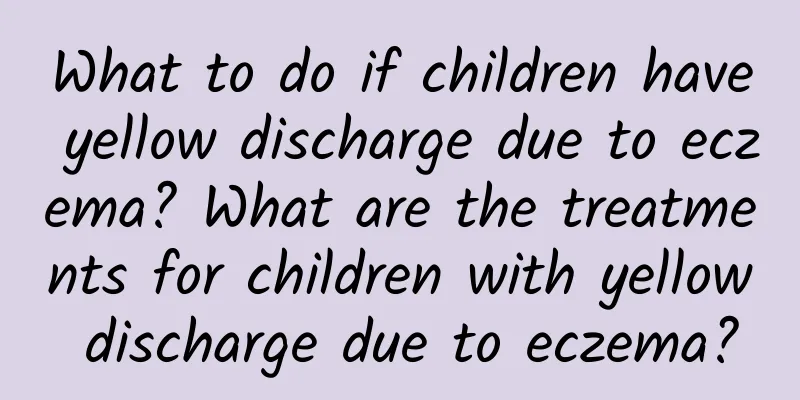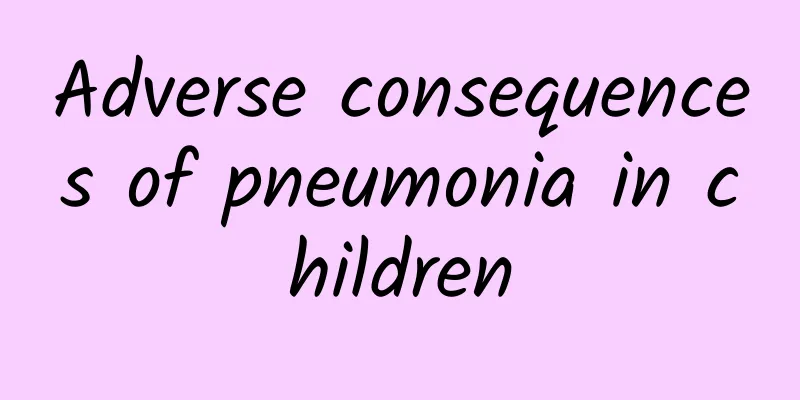What is the normal value of jaundice in a 10-day-old child?

|
Newborn babies are prone to jaundice, which is often divided into physiological jaundice and pathological jaundice. So what are the causes of jaundice and what is the normal range? The editor will answer your questions here. Causes of jaundice in 10-day-old babies 1. Excessive bilirubin production (1) Excessive destruction of red blood cells: The fetus is in a low-oxygen environment in the mother's womb, and the red blood cells increase in compensation, but their lifespan is short. After birth, the blood oxygen content increases and the excessive red blood cells are quickly destroyed. (2) High heme oxygenase content: The content is high within 7 days after birth, and the potential for producing bilirubin is high. 2. Immature liver function (1) Poor liver ability to absorb bilirubin: Insufficient levels of Y and Z proteins in liver cells result in insufficient liver absorption of bilirubin. (2) Poor liver function of conjugating bilirubin: The content of glucuronyl transferase in the liver is low and its activity is insufficient, resulting in poor function of forming conjugated bilirubin. (3) Poor liver excretion of bilirubin: Poor liver excretion of conjugated bilirubin can easily lead to cholestasis. 3. Characteristics of enterohepatic circulation: When a newborn is born, the normal intestinal flora has not yet been established and cannot convert the bilirubin entering the intestine into urobilinogen (fecal bilirubin). Types and values of jaundice in 10-day-old babies 1. Physiological jaundice Usually, two days after birth, the newborn's skin is visibly a little yellow, which reaches its peak at 3 to 5 days and most of the time disappears at 7 to 10 days. At this time, the jaundice index (serum bilirubin value) is generally within the normal range of no more than 15 mg/dL. 2. Pathological jaundice There are many causes of pathological jaundice. The criteria for full-term and premature babies are different. If the mother finds the following conditions, she should send the baby to the hospital for observation: 1. If jaundice is found in a newborn within 24 hours after birth, it is called "early jaundice". 2. The jaundice index rises too high all of a sudden, increasing by more than 5 mg/dL a day. This is a common type of jaundice (the blood types of the mother and baby are incompatible). 3. The jaundice index is too high, at 15mg/dL. 4. It lasts too long. Generally, physiological jaundice lasts for 7 to 10 days. If it lasts for more than two weeks, you should pay attention. |
<<: How to bask in the sun when your baby has jaundice
>>: What is the method to reduce neonatal jaundice?
Recommend
Is polio hereditary? Can I have children?
Poliomyelitis is usually not directly inherited, ...
What to do if your child has a cough and a lot of phlegm
Children with cough and phlegm can be treated wit...
How much does it cost to care for pediatric eczema?
How much does it cost to care for pediatric eczem...
Is it normal for a child to cough when he has chickenpox?
Whether it is normal for a child to cough when ha...
How to treat a two and a half year old baby with cough and phlegm How to treat a two and a half year old baby with cough and phlegm
When a two-year-old baby coughs and has phlegm, t...
What are the three treatments for Kawasaki disease?
What are the three treatments for Kawasaki diseas...
Can coughing in children lead to anemia?
Can coughing in children lead to anemia? Coughing...
How to breastfeed your baby with jaundice
How to breastfeed your baby with jaundice General...
How to treat patent ductus arteriosus in newborns
The treatments for patent ductus arteriosus in ne...
What are the examination items for mumps
Many people have had similar experiences, that is...
What are the symptoms of nephrotic syndrome in children? Parents should be alert to these 4 situations
In recent years, due to improper diet and environ...
Baby cough diagnosed with allergic rhinitis
If your baby is coughing and is diagnosed with al...
Pictures of polio
The occurrence of polio makes all parents very wo...
Will eczema recur in children?
Many mothers will encounter this situation: the b...
Do symptoms of hand, foot and mouth disease in adults indicate poor immunity?
The symptoms of hand, foot and mouth disease in a...









